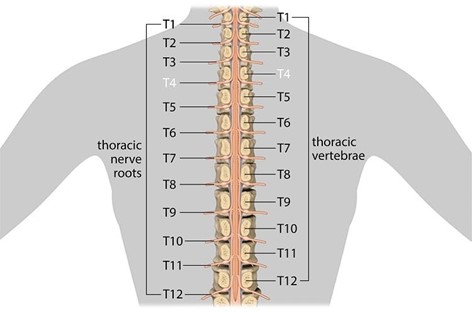A nurse is caring for a client who has a spinal cord injury at T-4. The nurse should recognize that the client is at risk for autonomic dysreflexia. Which of the following interventions should the nurse take to prevent autonomic dysreflexia?
Monitor for elevated blood pressure.
Provide analgesia for headaches.
Prevent bladder distention.
Elevate the client's head.
The Correct Answer is C
To prevent autonomic dysreflexia, the nurse should take the intervention of preventing bladder distention. Autonomic dysreflexia is a serious medical problem that can happen if a person has injured the spinal cord in their upper back¹. It makes their blood pressure dangerously high and can lead to a stroke, seizure, or cardiac arrest¹. One way to lower the chance of complications is to use the bathroom on a regular schedule and keep the bladder and bowels from becoming too full.
a. Monitoring for elevated blood pressure is important but not an intervention to prevent autonomic dysreflexia.
b. Providing analgesia for headaches is important but not an intervention to prevent autonomic dysreflexia.
d. Elevating the client's head is important but not an intervention to prevent autonomic dysreflexia.

Nursing Test Bank
Naxlex Comprehensive Predictor Exams
Related Questions
Correct Answer is A,B,D,C
Explanation
The correct sequence of steps the nurse should follow when a client begins to experience a tonic-clonic seizure is:
- Remain with the client and call for help.
- Place the client in the lateral position.
- Check the client for injuries.
- Reorient and reassure the client.
The nurse should first remain with the client and call for help to ensure that additional assistance is on the way. Next, the nurse should place the client in the lateral position to help keep their airway open and prevent aspiration. After the seizure has ended, the nurse should check the client for injuries that may have occurred during the seizure. Finally, the nurse should reorient and reassure the client, who may be confused or disoriented after the seizure.
Correct Answer is D
Explanation
The nurse should place a pillow under the client's head if the client is on the floor in the clonic phase of a tonic-clonic seizure. This can help protect the client's head from injury during the seizure.
Inserting a padded tongue blade into the client's mouth, keeping the client in a supine position, and gently restraining the client's extremities are not appropriate interventions for the nurse to take in this situation. Inserting a padded tongue blade into the client's mouth can cause injury to the teeth and gums. Keeping the client in a supine position can increase the risk of aspiration. Gently restraining the client's extremities can cause injury and is not recommended during a seizure.

Whether you are a student looking to ace your exams or a practicing nurse seeking to enhance your expertise , our nursing education contents will empower you with the confidence and competence to make a difference in the lives of patients and become a respected leader in the healthcare field.
Visit Naxlex, invest in your future and unlock endless possibilities with our unparalleled nursing education contents today
Report Wrong Answer on the Current Question
Do you disagree with the answer? If yes, what is your expected answer? Explain.
Kindly be descriptive with the issue you are facing.
